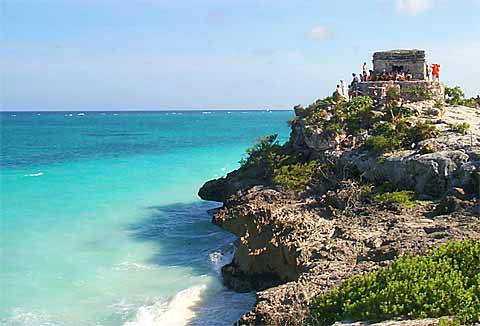Sam Lord's Castle celebrates the pirate who hung lanterns in palm trees to simulate harbour lights and draw sailors on to treacherous reefs. Once ships were wrecked, he would loot the cargoes

Tulum on the Yucatan Peninsula, Mexico, has among its attractive majestic Mayan ruins, miles of crystal clear waters, white sand that make it a bit of paradise when many tourists say, among them celebrities of cinema and art.
Today, it is the only preserved Mayan city on the shores of the sea and represents a tourist attraction of the Riviera Maya very much visited by travelers from all over the world.
Some consider it the most beautiful site in the country, during its period of splendor in the postclassic period (13th and 14th centuries) it represented an important commercial city and mandatory stop for many maritime routes that covered Mexico and South America.
In other times it was known by the name of Zama, which means "dawn" in Maya, which refers to its privileged orientation towards the east, where the sun rises every day, but its current name of Tulum means "wall".
After the arrival of the Spanish conquerors to the Yucatan peninsula and the disappearance of the local population, the city fell into oblivion, until 1841, when it was rediscovered by explorers John Lloyd Stephens and Frederick Catherwood. .
The archaeological site of Tulum is composed of a A series of buildings such as Tulum Castle, better known as the "Castle of the Sea", where the Mayans performed their religious ceremonies, in turn served as a beacon for the navigators who traveled through these waters.
Other archaeological relics include the Temple of the Frescoes of Tulum and the Temple of the God of the Wind. The first one houses some interesting murals and was used as an observatory of the sun. In fact, Tulum had a prestigious astronomy school attended by important figures of the time.
Meanwhile, the second represents a sanctuary dedicated to the Mayan god of this element. With the shape of a tower, it is one of the most photographed, as it is located on the shores of the sea.
The site is located within the Tulum National Park, which includes a whole natural area.

Sam Lord's Castle celebrates the pirate who hung lanterns in palm trees to simulate harbour lights and draw sailors on to treacherous reefs. Once ships were wrecked, he would loot the cargoes